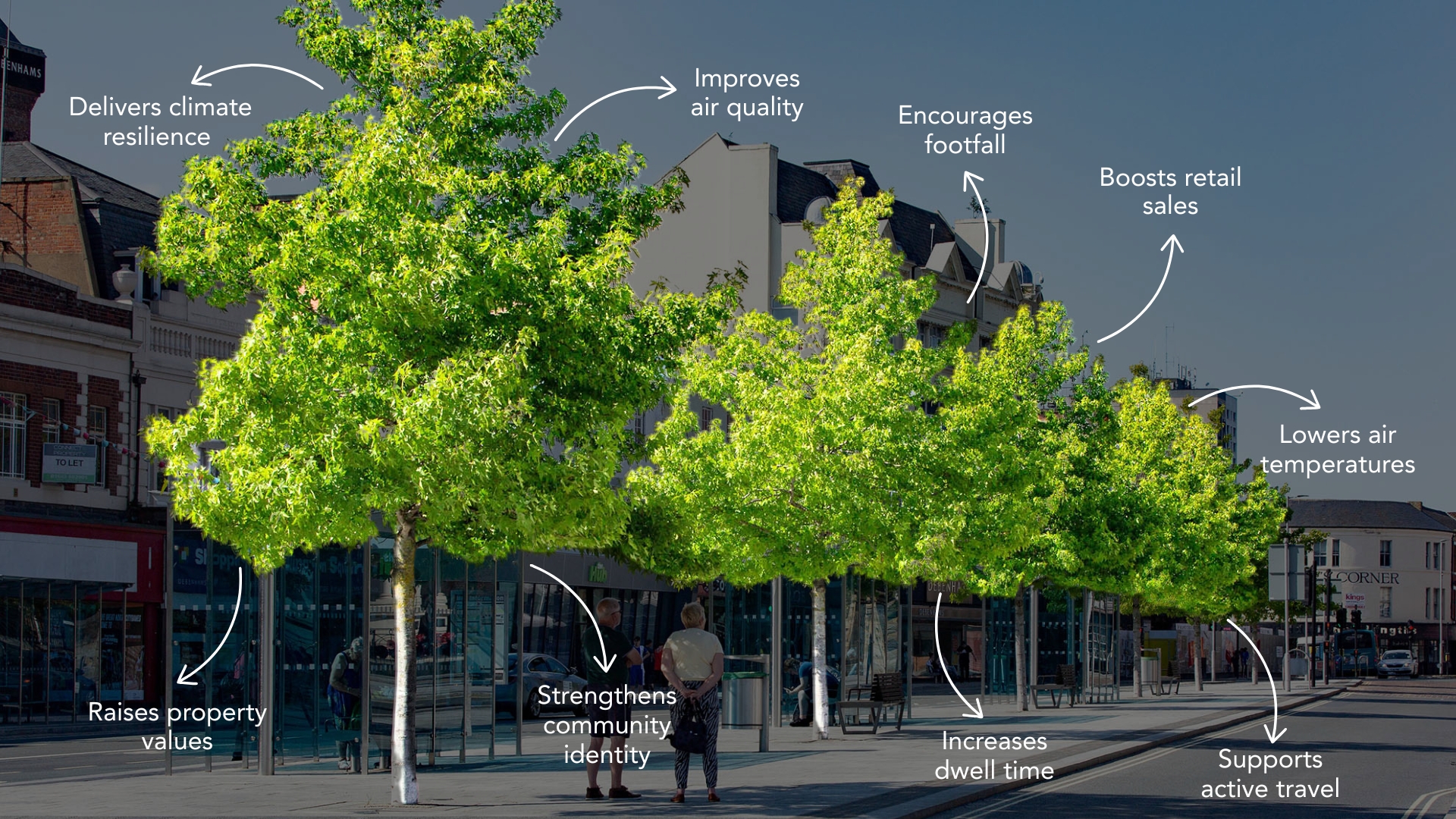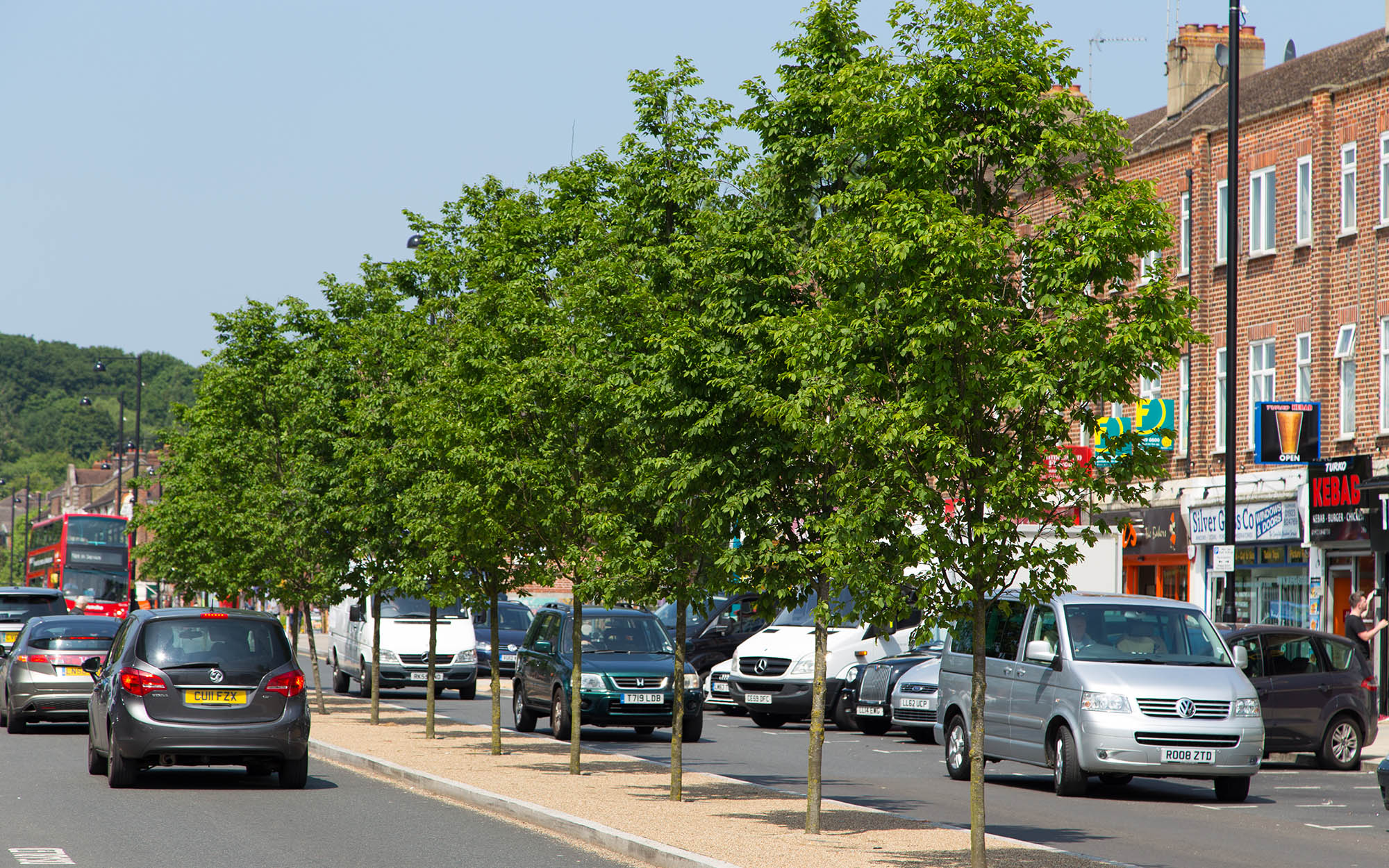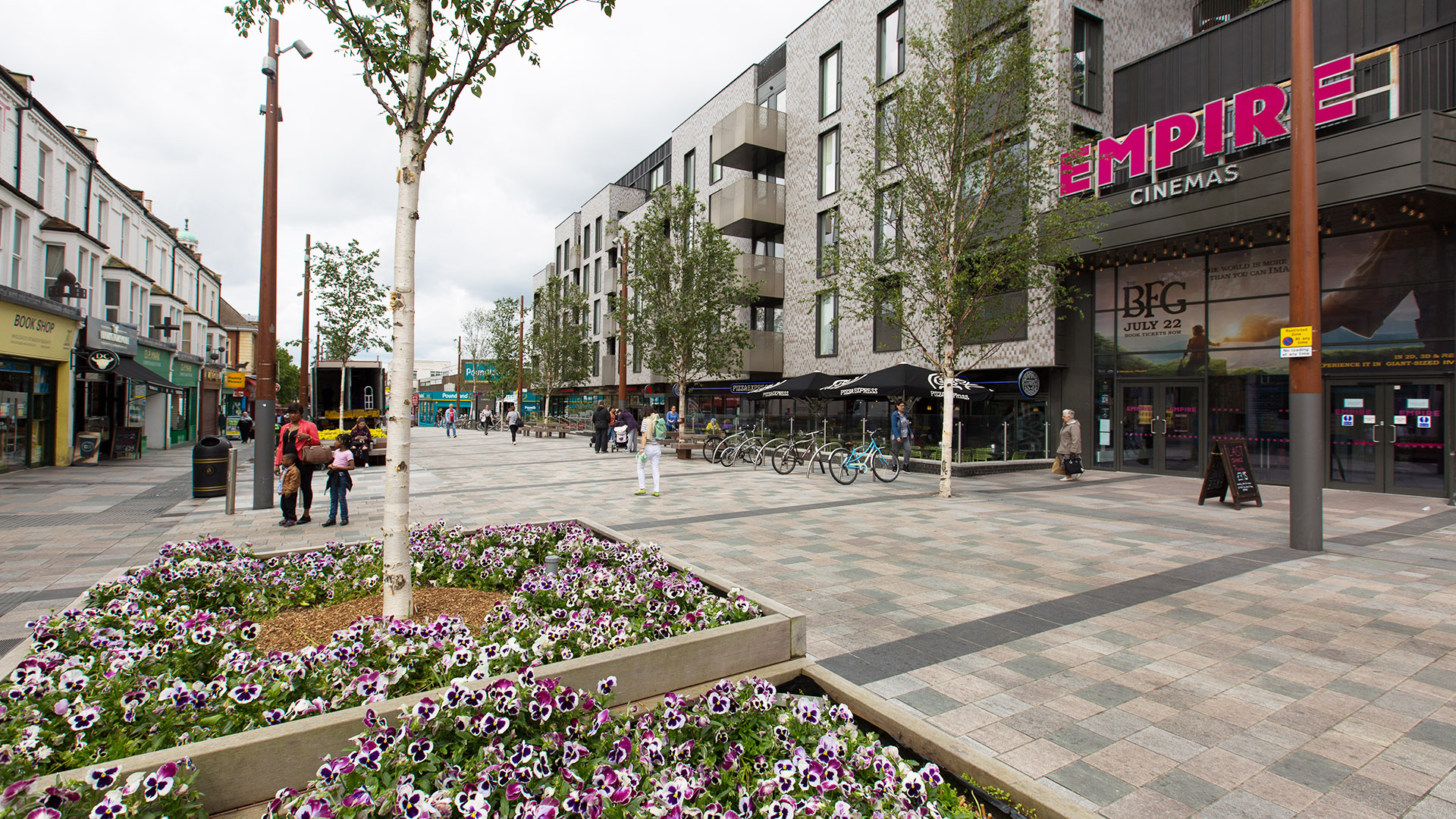Across towns and cities in the UK, high streets find themselves at a crossroads. Traditionally, summer brings an uptick in visitors, yet recent figures from the British Retail Consortium highlight just how tough the current landscape has become. In July 2025, total UK footfall slipped 0.4% compared with the same month last year, with high streets seeing a sharper decline of 1.7%.
In this climate of declining visitor numbers, towns and cities are under pressure to find strategies that will revitalise their centres, improve dwell time and attract both customers and businesses. While policy discussions often centre on business rates, transport connectivity or major redevelopment schemes, a growing body of evidence suggests that something as straightforward as planting and maintaining street trees can have a significant and measurable impact on the economic health of a high street.
Retail and Property Values
The most immediate and measurable financial benefit of street trees is increased retail spending. Modelling suggests that consumers may spend between 9-12% more in areas with large, well-maintained street trees. These environments not only encourage people to linger longer but also create a more positive association with the location, which in turn drives repeat visits and recommendations.
Property values reflect this pattern too. While much of the detailed research comes from international sources, the findings align with the UK market, where homes on tree-lined streets consistently sell at a premium. Studies suggest that properties in greener settings can command values up to 6% higher than comparable homes without street trees.

Infrastructure and Health Savings
Beyond the immediate retail and property benefits, street trees deliver substantial cost savings through environmental services. Trees provide shade that can reduce air-conditioning demand by up to 30% and cut winter heating needs by as much as 50%. By intercepting rainfall, they reduce the burden on drainage systems, lowering flood risk and associated damage costs. The shading of roads and pavements reduces surface temperatures, helping to slow deterioration and reducing the need for costly resurfacing.
The stormwater management capacity alone delivers remarkable infrastructure savings. Trees in full leaf can intercept up to 79% of a single 20 mm rainfall event in a 24-hour period, reducing urban flooding and combined sewer overflow events, and this can increase with the use of SuDS tree pit systems. These natural drainage systems help councils avoid millions in cleanup costs and emergency infrastructure repairs, while reducing the burden on aging drainage systems that struggle to cope with increasingly intense rainfall patterns.
The health and environmental benefits translate into measurable economic returns as well. Neighbourhoods with the most tree cover can have 30% less air pollution and be up to 4°C cooler in heatwaves compared to areas with minimal cover. Areas with minimal tree cover experience urban heat island effects that can raise surface temperatures by up to 9°C compared to tree-lined streets during summer months. Strategic placement of trees and green infrastructure can reduce this effect and cool the air by between 2°C and 8°C, reducing heat-related stress and premature deaths during high-temperature events.
Nationally, the UK Government has valued trees outside of forests, including street trees, at £3.8 billion in combined economic benefits through carbon capture, flood resilience, cooling, and pollution reduction. Tools like Tree Equity Score UK are now helping councils identify where planting could deliver the greatest social and environmental return. These benefits aren’t just theoretical, they’re being demonstrated across the UK through successful regeneration projects that have placed street trees at their heart.
Transforming Community Spaces Through Trees
Northwood Hills, a suburban area in northwest London, has undergone a significant transformation aimed at enhancing its town centre and improving quality of life for residents. The project focused on rejuvenating the high street as a gateway to the region’s green spaces and heritage, with shop fronts and public spaces revitalised to encourage greater local engagement.
The integration of tree planting and green infrastructure played a pivotal role in this regeneration. The newly planted trees have contributed to improved air quality, reduced urban heat island effects and enhanced the overall aesthetic appeal of the high street. This greening initiative has made the town centre more attractive, encouraging local residents and visitors to engage more with the space, thereby supporting local businesses and fostering a stronger sense of community.

Enhancing Urban Life Through Green Infrastructure
Walthamstow High Street, with its rich history and bustling market dating back to 1885, exemplifies how green infrastructure can transform established commercial areas. Carefully planned urban tree planting played a key role in transforming this area into a vibrant and welcoming public space.
The integration of trees and green spaces has provided essential shade and shelter, encouraging people to spend more time outdoors and enhancing the pedestrian experience. This has made the high street more inviting for both residents and visitors, while the presence of greenery has improved air quality and reduced urban heat island effects. As the green infrastructure matures, it continues to offer long-term benefits including stormwater management and climate change mitigation, ensuring Walthamstow High Street remains a thriving and sustainable community hub.

Why Trees Are the Smart Choice
From increased retail spending and higher property values to substantial infrastructure savings and health benefits, street trees address multiple urban challenges through a single intervention. The examples from Northwood Hills and Walthamstow show how communities across the UK are already realising these benefits, creating more attractive, economically viable, and resilient high streets. What makes these approaches particularly appealing is their scalability and adaptability.
With retail patterns changing and economic pressures mounting, Britain’s high streets need thoughtful, practical solutions to secure their future. Street trees aren’t a single definitive solution, but when paired with well-designed tree pits and proper long-term care, they can deliver results quickly and continue to grow in value year after year.
The success stories emerging from towns and cities across the UK suggest that regeneration doesn’t always demand grand gestures or risky investments. Sometimes the most effective way forward is simply to make space for nature and give it the support it needs to thrive.

